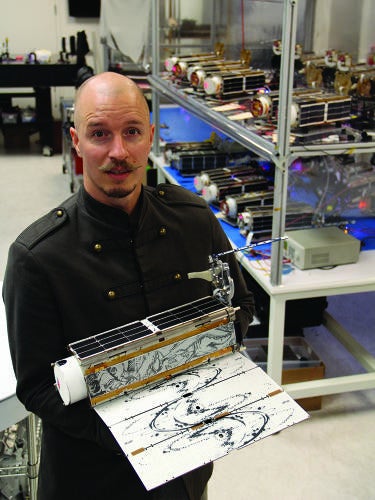Week 9: Space and Art
 |
| Personal Project, depicting first American spacewalk outside Gemini IV |
Space is a huge inspiration for my career. I have always been fascinated by space, its history, present, and future. I can't think of any thought more fundamental to consciousness than an individual to ponder what it is, where it is, how it got there and why it is there. These answers may lie in observing the impacts of past events in outer space, giving us clues to the nature of the Big Bang.
 |
| [2] |
 |
| [3] |
Images taken by NASA are often released to the public, making them accessible to artists. These images are often edited and used to produce artistic images, such as in image [2]. This image was created by Zouassi, one of my personal favorite artists, who often uses NASA images as a starting point.
 Microsatellites are widely used for Earth imaging, keeping a full map of the Earth updated constantly. These images can be used for weather, navigation, or even art. An artist I find very interesting is T. Strömberg, who exclusively uses images from Google's satellites to produce art, shown in image [3].
Microsatellites are widely used for Earth imaging, keeping a full map of the Earth updated constantly. These images can be used for weather, navigation, or even art. An artist I find very interesting is T. Strömberg, who exclusively uses images from Google's satellites to produce art, shown in image [3]. |
| [5] |
Another example of art in space is Tama Art University's ARTSAT project: INVADER (Interactive satellite for Art and Design Experimental Research). The Japanese student group aims for a practical use of a satellite for art and design. The satellite contains various sensors, including Lightning Equipment which changes color according to temperature data, a small camera taking images of Earth to utilize in art, and a voice data transmitter. The project aims to increase interest in awareness of art & nanosatellites and amateur radio.
References:
- Vesna, Victoria. "Space." YouTube. YouTube, 29 July 2013. Web. 04 June 2017.
- "Zouassi • Instagram Photos and Videos." Instagram. N.p., n.d. Web. 05 June 2017.
- "T. Strömberg (@to.stromberg) • Instagram Photos and Videos." Instagram. N.p., n.d. Web. 04 June 2017.
- McKinnon, Mika. "Microsatellite Art In Orbit." Gizmodo. Gizmodo.com, 22 Mar. 2014. Web. 04 June 2017.
- "PROJECT1:INVADER." ARTSAT. N.p., n.d. Web. 04 June 2017.
Comments
Post a Comment